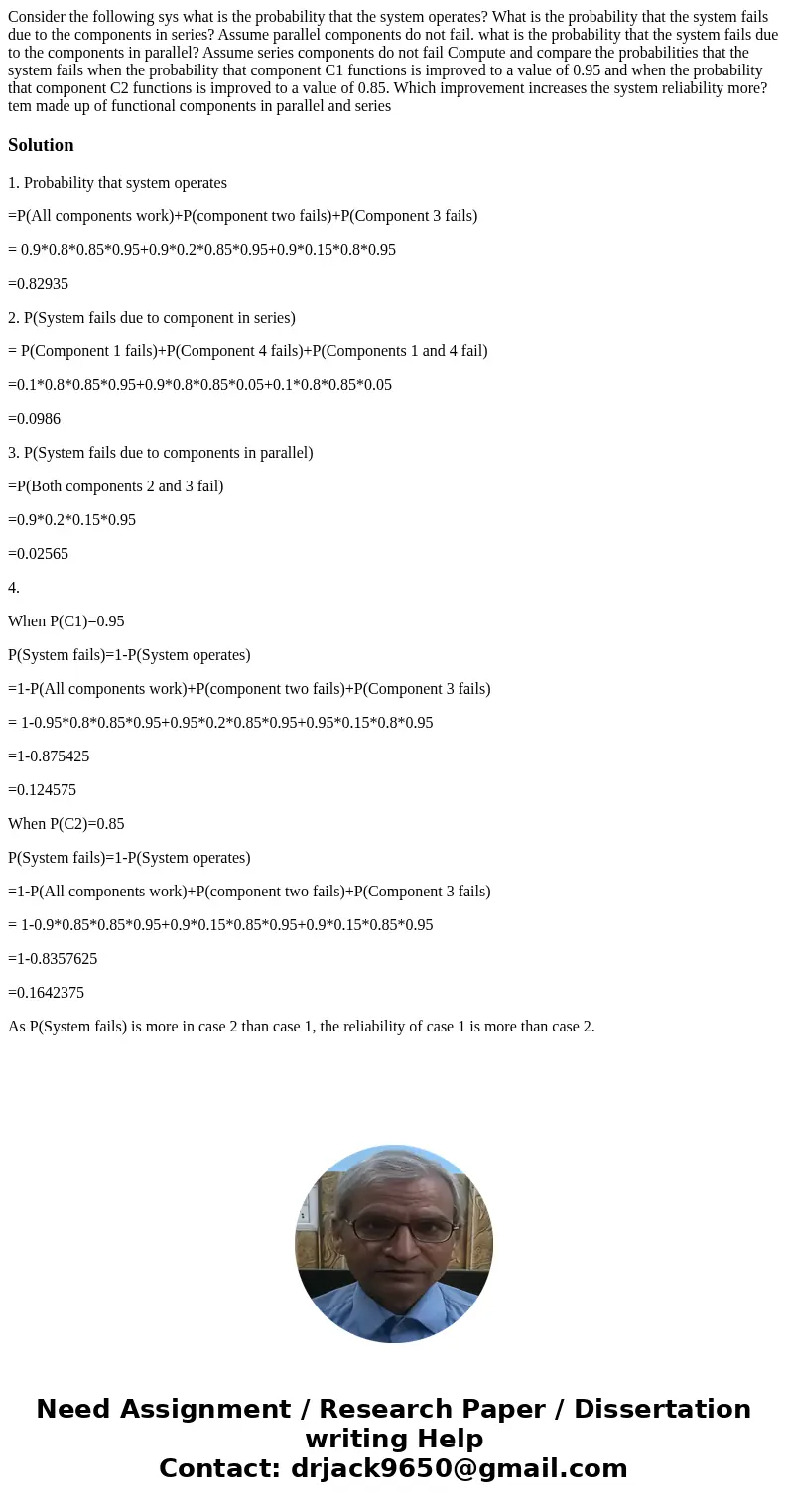Consider the following sys what is the probability that the
Solution
1. Probability that system operates
=P(All components work)+P(component two fails)+P(Component 3 fails)
= 0.9*0.8*0.85*0.95+0.9*0.2*0.85*0.95+0.9*0.15*0.8*0.95
=0.82935
2. P(System fails due to component in series)
= P(Component 1 fails)+P(Component 4 fails)+P(Components 1 and 4 fail)
=0.1*0.8*0.85*0.95+0.9*0.8*0.85*0.05+0.1*0.8*0.85*0.05
=0.0986
3. P(System fails due to components in parallel)
=P(Both components 2 and 3 fail)
=0.9*0.2*0.15*0.95
=0.02565
4.
When P(C1)=0.95
P(System fails)=1-P(System operates)
=1-P(All components work)+P(component two fails)+P(Component 3 fails)
= 1-0.95*0.8*0.85*0.95+0.95*0.2*0.85*0.95+0.95*0.15*0.8*0.95
=1-0.875425
=0.124575
When P(C2)=0.85
P(System fails)=1-P(System operates)
=1-P(All components work)+P(component two fails)+P(Component 3 fails)
= 1-0.9*0.85*0.85*0.95+0.9*0.15*0.85*0.95+0.9*0.15*0.85*0.95
=1-0.8357625
=0.1642375
As P(System fails) is more in case 2 than case 1, the reliability of case 1 is more than case 2.

 Homework Sourse
Homework Sourse